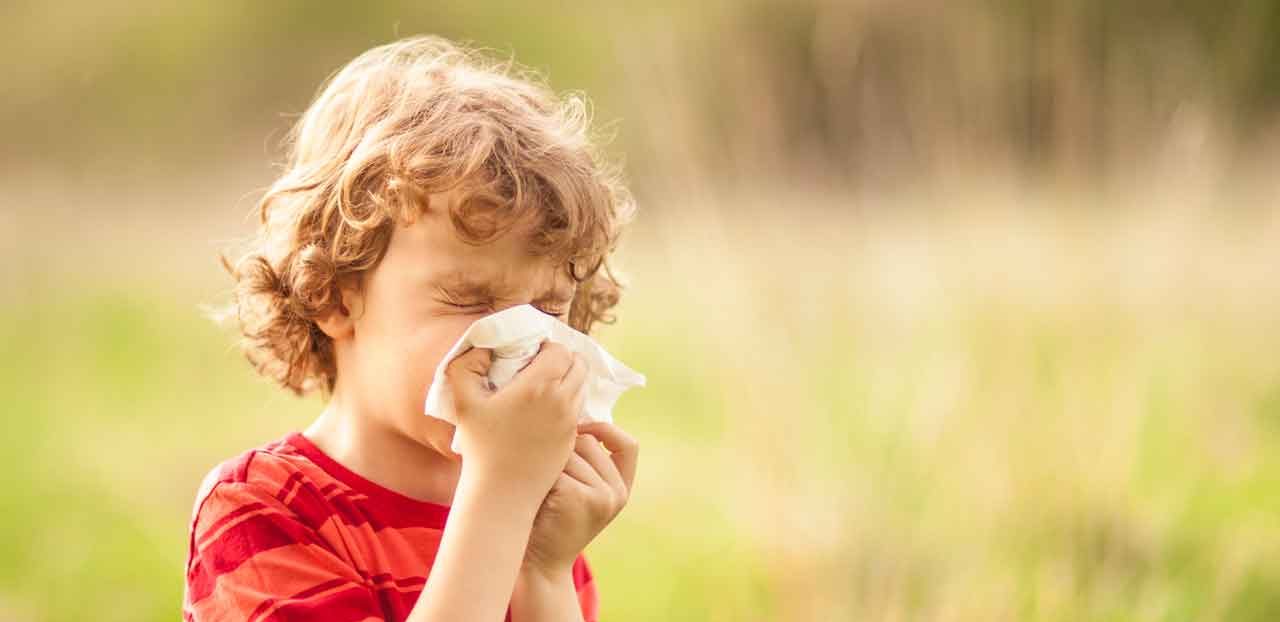Allergy Relief for Kids

Despite advances in allergy treatments, sometimes allergy relief for kids is a matter of simply keeping them inside when certain allergens are in the air.
Allergy season can make your kids miserable, but drugs and other solutions can help.
Long-lasting sneezing with a stuffy or runny nose “may signal the presence of allergic rhinitis — the collection of symptoms that affect the nose when you have an allergic reaction to something you breathe in and that lands on the lining inside the nose,” according to the Food and Drug Administration (FDA).
Up to 40 percent of children suffer from allergic rhinitis, according to the National Institute of Allergy and Infectious Diseases. Children are more likely to develop allergies if one or both parents have them.
YOU MIGHT ALSO LIKE: Asthma Risk Factors
If a child has allergies and asthma, “not controlling the allergies can make asthma worse,” says Anthony Durmowicz, MD, a pediatric pulmonary doctor in the FDA’s Division of Pulmonary, Allergy, and Rheumatology Products.
Allergy relief for kids
But in the past 20 years, “there has been a remarkable transformation in allergy treatments,” says Jay E. Slater, MD, director of the FDA’s Division of Bacterial, Parasitic and Allergenic Products Slater. “Kids used to be miserable for months out of the year, and drugs made them incredibly sleepy. But today’s products offer proven approaches for relief of seasonal allergy symptoms.”
Sometimes it’s a matter of simply keeping your kids inside more if certain allergens are at a high air count. That includes ragweed in the fall, grass, and molds. Although, for some kids, allergies are caused by inside sources such as pet danger and dust mites, according to the College of Allergy, Asthma and Immunology (CAAI).
It’s important to know the difference between seasonal allergies and perennial allergies. Seasonal allergies are those typically brought on by pollen from plants, weeds, grasses, and trees. Perennial allergies are more often the indoor kind, such as those from dust mites, animal dander, cockroaches, and feathers.
Irritants include cigarette smoke, perfume, and car exhaust. Other allergies can be caused by food, such as peanuts, eggs, milk, and milk products.
Allergy medicine for kids
If it seems there’s nowhere for your allergic child to turn, a plethora of over-the-counter (OTC) products can help, but always first get advice from your doctor or pharmacist on what to use and how often.
It’s likely a health professional will recommend one of the allergy medicines on the market that help relieve symptoms but don’t sedate your child.
YOU MIGHT ALSO LIKE: Are Allergies Genetic?
You can also try clearing irritants from your child’s nose and decrease inflammation with a daily saline rinse, writes Holly Pevzner. Dissolve 1 teaspoon of salt and 1/2 teaspoon of baking soda in a pint of lukewarm water. Put the solution in a bulb syringe or neti pot and irrigate your child’s nose. You can also buy ready-to-use saline solutions at your local pharmacy.
If OTC products and other measures don't seem to relieve
the symptoms, you can always have your child tested for allergies by an allergist.
Depending on what causes your child’s allergies, the allergist will give your child shots, or immunotherapy. This means injecting a small amount of the allergen that affects your child. The dose will be increased over time until your child is at a maintenance level. Eventually, your child’s immune system builds up its own immune response to the allergen and the symptoms abate.
But immunotherapy is not for acute symptoms. The shots work over a relatively long period of time, so this is an investment in patience. Most kids will see benefits within 12 months, but they’ll stay on the shot for up to four or five years.
Natural allergy relief for kids
Some allergy experts believe in natural remedies for your child. One is to avoid using window fans because they can draw allergens into your home. Similarly, it might be wise to invest in air-conditioning during the hot months because it acts as a filter while cooling the home.
Other natural remedies include quercetin, a natural plant-derived compound called a bioflavonoid. Quercetin helps stabilize allergenic mast cells and prevents them from releasing histamine. It’s found in citrus fruits, onions, apples, parsley, tea, tomatoes, broccoli, and lettuce, but sufferers will most likely need to use supplements of 1,000 milligrams to build up enough resistance to prevent attacks. Again, consult your doctor or pharmacist before start your child on such supplements.
Some studies also have found some benefit in eating foods rich in omega-3 fatty acids. Participants were less likely to suffer allergic symptoms than people who didn’t eat such foods, which include fish, walnuts, and flaxseed oil.
Stinging nettle and butterbur are plants long used as alternatives to antihistamines, says Serrron Wilke, a clinical naturopath in Portland, Ore. She has used both a stinging nettle tincture and dried herb as a tea with success. If you want to try it, make sure it’s appropriate for a child.
Updated:
February 27, 2020
Reviewed By:
Janet O’Dell, RN